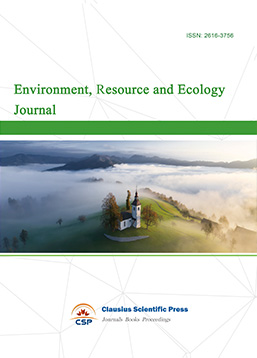Feature Recognition and Classification Based on Hyperspectral Data Mining
DOI: 10.23977/geors.2022.050102 | Downloads: 25 | Views: 1742
Author(s)
Mingliang Wang 1, Ying LI 1, Canghai Guan 1, Hongli Li 1
Affiliation(s)
1 The Second Geodetic Surveying Brigade, Ministry of Natural Resources, Harbin, Heilongjiang 150025, China
Corresponding Author
Mingliang WangABSTRACT
Since entering the 21st century, with the progress of various imaging spectrometer technologies and the rapid expansion of their application fields, hyperspectral remote sensing technology has been widely used in the fields of land and resources utilization, environmental monitoring, geological exploration, agricultural production, disaster early warning, urban planning, artificial target recognition and military detection. While providing more information than other remote sensing images, hyperspectral images have a large amount of data due to their many bands, which makes various ground object recognition and classification algorithms widely used in multispectral image processing slow and inefficient in hyperspectral image processing. Feature classification is an important field in digital image processing. A series of valuable data are obtained through the operation, extraction and classification of hyperspectral data images, and then applied in various fields. This paper studies the feature recognition and classification based on hyperspectral data mining. Hyperspectral data can accurately identify the common types of urban features, and the recognition method is particularly important for the results, and the fusion processing of hyperspectral images can improve the precision and accuracy of classification results to a certain extent.
KEYWORDS
Hyperspectral, Data mining, Feature recognition and classificationCITE THIS PAPER
Mingliang Wang, Ying LI, Canghai Guan, Hongli Li, Feature Recognition and Classification Based on Hyperspectral Data Mining. Geoscience and Remote Sensing (2022) Vol. 5: 11-15. DOI: http://dx.doi.org/10.23977/geors.2022.050102.
REFERENCES
[1] Hai-Hong P, Ngoc-Son V, Vu-Lam N, et al. Action recognition based on Motion of Oriented Magnitude Patterns and Feature Selection[J]. IET Computer Vision, 2018, 12(5):735-743.
[2] Cai J, Hu J, Li S, et al. Combination of temporal-channels correlation information and bilinear feature for action recognition[J]. IET Computer Vision, 2020, 14(8):634-641.
[3] Huthaifa, I, Ashqar, et al. Smartphone Transportation Mode Recognition Using a Hierarchical Machine Learning Classifier and Pooled Features From Time and Frequency Domains[J]. IEEE Transactions on Intelligent Transportation Systems, 2019, 20(1):244-252.
[4] Sl A, Bz A, Sz A, et al. Local discriminant coding based convolutional feature representation for multimodal finger recognition - ScienceDirect[J]. Information Sciences, 2021, 547:1170-1181.
[5] Bi L, Xie W, Zhao J. Automatic recognition and classification of multi-channel microseismic waveform based on DCNN and SVM[J]. Computers & geosciences, 2019, 123(FEB.):111-120.
[6] Appice A, Guccione P, Malerba D. A novel spectral-spatial co-training algorithm for the transductive classification of hyperspectral imagery data[J]. Pattern Recognition, 2017, 63:229-245.
[7] Zhao S, Zhang B, Chen C P. Joint deep convolutional feature representation for hyperspectral palmprint recognition[J]. Information Sciences, 2019, 489:167-181.
[8] Pg A, Gqb C, JK D. Discriminant analysis and feature selection in mass spectrometry imaging using constrained repeated random sampling - Cross validation (CORRS-CV)[J]. Analytica Chimica Acta, 2020, 1097:30-36.
| Downloads: | 1080 |
|---|---|
| Visits: | 112361 |
Sponsors, Associates, and Links
-
International Journal of Geological Resources and Geological Engineering

-
Big Geospatial Data and Data Science

-
Solid Earth and Space Physics

-
Environment and Climate Protection

-
Journal of Cartography and Geographic Information Systems

-
Environment, Resource and Ecology Journal

-
Offshore and Polar Engineering

-
Physical and Human Geography

-
Journal of Atmospheric Physics and Atmospheric Environment

-
Trends in Meteorology

-
Journal of Coastal Engineering Research

-
Focus on Plant Protection

-
Toxicology and Health of Environment

-
Advances in Physical Oceanography

-
Biology, Chemistry, and Geology in Marine

-
Water-Soil, Biological Environment and Energy

-
Geodesy and Geophysics

-
Journal of Structural and Quaternary Geology

-
Journal of Sedimentary Geology

-
International Journal of Polar Social Research and Review


 Download as PDF
Download as PDF